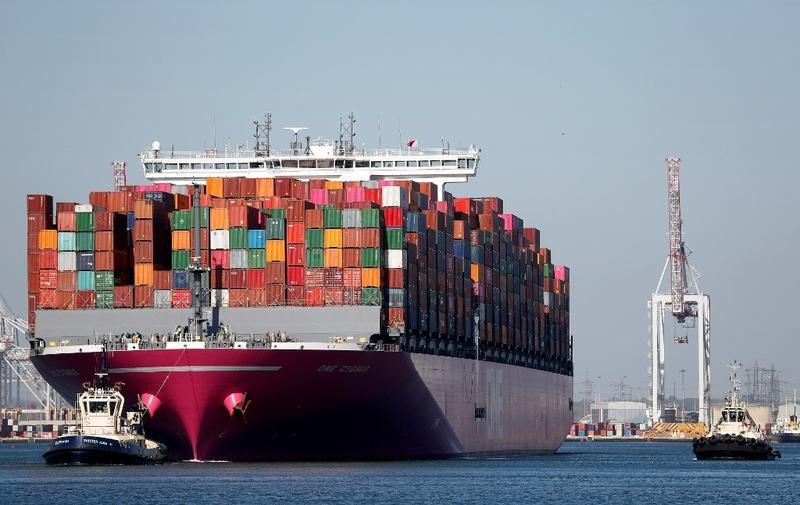 A Japanese cargo ship sails along Southampton Water in Southampton, England, on April 20, 2020. (ADRIAN DENNIS / AFP)
A Japanese cargo ship sails along Southampton Water in Southampton, England, on April 20, 2020. (ADRIAN DENNIS / AFP)
LONDON - The United Kingdom announced a new post-Brexit tariff regime on Tuesday to replace the European Union's (EU) external tariff, maintaining a 10 percent tariff on cars but cutting levies on tens of billions of dollars of supply chain imports.
Items like dishwashers, freezers and Christmas trees will be able to enter the UK tariff-free as of Jan 1 2021, the Department for International Trade said in a statement Tuesday. Under the plan, 30 billion pounds worth (US$36.6 billion) of tariffs will also be removed on supply chain imports, like copper alloy tubes, and screws and bolts, the department said.
The government said tariffs would be eliminated on a wide range of products, with 60% of trade coming into the UK tariff-free on WTO terms or through existing preferential access, compared to 47% currently
After decades outsourcing its trade policy to the EU, Britain is seeking free trade agreements with countries around the world and aims to have deals in place covering 80 percent of British trade by 2022.
ALSO READ: UK mulls cutting tariffs on US agricultural imports
The new tariff regime, in place from January 2021, marks a departure from what some UK officials call an overly complex EU system, setting out Britain's stall as it negotiates trade deals with both the United States and the Brussels-based bloc.
Britain said the regime, known as UK Global Tariff, would be simpler and cheaper than the EU's Common External Tariff. It will apply to countries with which it has no agreement and removes all tariffs below 2 percent.
"Our new Global Tariff will benefit UK consumers and households by cutting red tape and reducing the cost of thousands of everyday products," International Trade Secretary Liz Truss said.

The government said tariffs would be eliminated on a wide range of products, with 60 percent of trade coming into the UK tariff-free on WTO terms or through existing preferential access, compared to 47 percent currently.
However, the UK said it would maintain a 10 percent tariff on cars, and also keep duties on products competing with industries such as agriculture, automotive and fishing.
The UK said it would maintain a 10% tariff on cars, and also keep duties on products competing with industries such as agriculture, automotive and fishing
"Keeping agricultural protection makes sense as a bargaining chip for EU & US trade negotiations. But means big cost increases for agriculture imports if no UK-EU FTA," said Thomas Sampson, Associate Professor at the London School of Economics.
The government also said it was cutting duties on renewable energy items like thermostats, vacuum flasks and LED lights, to promote a green economy.
In addition, it will introduce a temporary zero tariff on goods being used to fight COVID-19 such as personal protective equipment.
Separately, the UK is engaged in trade talks with the EU, aiming to sign a Canada-style accord that would eliminate most tariffs and quotas on goods but introduce new barriers like customs paperwork. The latest round of talks ended with little progress last week.
The UK’s announcement will help its ongoing trade negotiations with the EU, the US and Japan because it makes clear what the default duties would be if no agreement is reached in these talks, said Sam Lowe, senior research fellow at the Centre for European Reform.
READ MORE: UK plans to start virtual trade talks with Japan shortly
Britain’s plan also marks a walk-back from the temporary tariff schedule it proposed in the event of a no-deal Brexit last year, which would have seen 87 percent of UK imports made tariff-free. That proposal was criticized for giving away too much British leverage in future trade talks.


